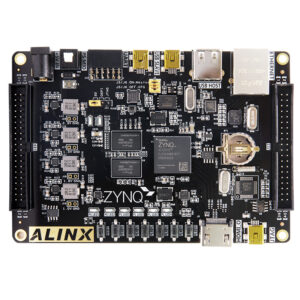All electronic devices require direct current, since the AC current may not be stable often resulting in ripples due high or low voltages. So bridge rectifiers are used inside the power supplies of almost all electronic equipment.
Let’s see what a Rectifier is before we come to know about Bridge Rectifiers
A Rectifier is an electrical device that converts alternating current (AC), which periodically reverses direction, to direct current (DC), which flows in only one direction. The process is known as Rectification.
Now coming to Bridge Rectifier
A bridge rectifier is an arrangement of four or more diodes in a bridge circuit configuration as shown in figure 1 which provides the same polarity of output for either polarity of input. A bridge rectifier makes use of four diodes in a bridge arrangement to achieve full-wave rectification. The AC voltage generated is passed through a circuit of four diodes, which is converted into a more useful DC output.

Structure of Bridge Rectifier
A Bridge Rectifier is an arrangement of four or more diodes in a bridge circuit configuration. At a particular time any of the two diodes will be Forward Biased and the other two will be Reverse Biased, as per the polarity at its Anode or Cathode. This creates two different paths for the current at the output for each cycle. However, the polarity of the nodes are not changing at the Output. Thus we will get a Fully Rectified waveform at the output. Since there is no positive and negative half cycles, it is a DC with ripples.
Working Principle of a Bridge Rectifier
For our purpose, we will use a Transformer that converts the 220 VAC available at the wall socket to a 12 VAC signal. The Transformer plugs directly into the wall socket. The transformer has been designed to convert a 220 VAC input into a 12 VAC signal. So this means that the transformer has a 10:1 turn’s ratio.
The Full wave Bridge Rectifier is designed to convert an AC sine wave signal to a full wave DC pulsating signal. The Rectifier is connected to the secondary of a transformer as shown in figure 2.

Current always flows from a point of higher potential to a point of lower potential. Now when the 220 AC voltage is given, the Transformer converts the 220 AC available at the wall socket to a 12 VAC signal.
Let us see the working of a Bridge Rectifier based on figure 3. During Positive half cycle, Diode D1 and D3 are Forward biased and Diode D4 and D2 are Reverse biased. So current flows from point A to B as B has a lower potential than A.

Now point B has a higher potential than C and D, but Diode D1 will be forward biased and conducts, while Diode D4 will be reverse biased and will not conduct but it blocks the flow of current from B to D. And now C has a higher potential than G, so current will flow and the Lamp will blink as shown in figure 4 until the forward biased condition.
But the current flow doesn’t stop here. The current flows from G to D. Since D3 is forward biased, current flows from D to E and flows further to the negative terminal of AC supply but Diode D2 is reverse biased, so flow of current is blocked and does not conduct.

During Negative half cycle, the bottom AC starts to work and Diode D2 and D4 are Forward biased and Diode D1 and D3 are Reverse biased. So current flows from point F to E as E has a lower potential than F.
Now point E has a higher potential than C and D, but Diode D2 will be forward biased and conducts, while Diode D3 will be reverse biased and will not conduct but it blocks the flow of current from E to D. And now C has a higher potential than G, so current will flow and the Lamp will blink as shown in figure 5 until the reverse biased condition. But the current flow doesn’t stop here. The current flows from G to D. Since D4 is forward biased, current flows from D to B and flows further to the negative terminal of AC supply but Diode D3 and D1 are reverse biased, so flow of current is blocked and does not conduct.

Bridge Rectifier Hardware Specifications
It has an offset voltage of 400V max and a rated current of 1.5A. For a given power output, power transformer of smaller size can be used in case of the bridge rectifier because current in both (primary and secondary) windings of the supply transformer flow for the entire ac cycle. The Pin out diagram is shown in figure 6 where ~ represents the output from the AC signal and + and – are used to give the input to desired component.

Thank you for reading this blog,
For more information about the product please visit: http://www.tenettech.com/product/3406/w04m-15a-400v-full-wave-bridge-rectifier#contentHome-tab
For more information about different products please visit: http://www.tenettech.com/category/1/products
For technical queries please drop an e-mail: info@tenettech.com






